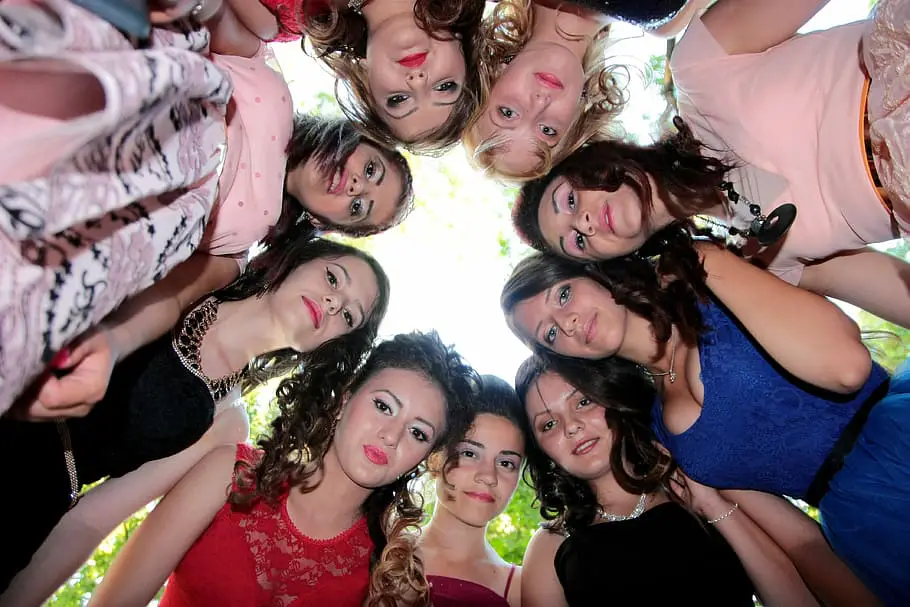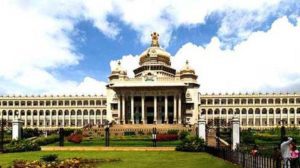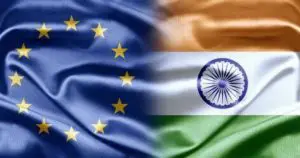Table of Contents
Role of Women and Women’s Organizations in India | UPSC – IAS
(An Introduction and Analysis)
Indian Society, which is largely male dominated, for the position of women in society. Not only men, even most women internalize their position in society as a fair description of their status through the ages. These generalizations apply to some degree to practically every known society in the world.
- Women play various roles in their lifetime ranging from a mother to that of a breadwinner but are almost always subordinated to male authority; largely excluded from high status occupation and decision making both at work and at home.
- Paradoxically, even in our Indian society where women goddesses are worshipped, women are denied an independent identity and status.
In recent years, particularly with the rise of Women’s Liberation Movement, this discrimination against women has been widely debated. Two main positions have emerged from this debate. One maintains that this inequality between the sexes is based upon the biologically or genetically based differences between men and women. This view is opposed by the argument that gender roles are culturally determined and inequality between the sexes is a result of a long drawn process of socialization.
Women’s Liberation Movement | UPSC – IAS
Social movement: It is defined as an organized effort by a group of people, either to bring or resist change, in the society.
Objective: Women’s movement is a variant of social movement & it aims to bring changes in the institutional arrangements, values, customs and beliefs in the society that have subjugated women over the years.
Origin: British rule led to spread of English education and western liberal ideology resulted in a number of movements for social change & religious reform in 19th C. Women’s movement is linked to both social reform movements & the nationalist movement.
Social reform movements | UPSC – IAS
Brahmo Samaj:It was founded by Raja Ram Mohan Roy in 1825 & attempted to abolish restrictions and prejudices against women, which included child marriage, polygamy, limited rights to inherit property. Education was seen as the major factor to improve the position of women.
-
- Civil Marriage Act, 1872 was passed, which permitted inter-caste marriage, legalized divorce and
fixed 14 and 18 as the minimum age of marriage for girls and boys respectively - Raja Ram Mohan Roy played an important role in getting Sati abolished
- Civil Marriage Act, 1872 was passed, which permitted inter-caste marriage, legalized divorce and
- Prarthana Samaj:It was founded by MG Ranade & RG Bhandarkar in 1867. Its objectives were more or less similar to that of Brahmo samaj but remained confined to western India. Justice Ranade criticized child marriage, polygamy, restriction on remarriage of widows and non access to education.
- Arya Samaj: It was founded by Dayanand Saraswati in 1875. Unlike the above two it was a religious revivalist movement. It advocated reform in the caste system, compulsory education for men and women, prohibition of child marriage by law, remarriage of child widows. It was opposed to divorce & widow remarriage in general.
- Social reformers mentioned above eulogized the position of women in ancient India. However radicals like Ishwar Chandra Vidyasagar, Jyotiba Phule and Lokhitwadi Gopal Hari Deshmukh accused the caste system responsible for the subjugation of women in society.
- Similar movements began in Islamic community as well. Begum of Bhopal, Syed Ahmad Khan & Sheikh
Abdullah in Aligarh and Karmat Hussain in Lucknow spearheaded a movement to improve women’s education. - Movement Weakness: Gender equality was never an agenda for any of the movements mentioned above. They had a very limited perspective of changing the position of women within the family through education, as education would improve women’s efficiency as housewives and mothers !
Legislative Acts | UPSC – IAS
Parliament from time to time has passed several legislations to empower women & to provide them a legal basis in their fight for equality & justice. Some of them are:
- Sati (Prevention) Act 1987 – The practice of Sati which was first abolished in 1829, was revised and made illegal in 1887. It provided for a more effective prevention of the commission of sati and its glorification and for matters connected therewith.
- Amendment to criminal Act 1983– This Act talks about domestic violence as an offence, rape is also made a punishable offence.
- Special Marriage Act 1954 – It has been amended to fix the minimum age of marriage at 21 yrs for males & 18 yrs for females.
- Hindu Succession Act 1956– Equal share to daughter from property of father, while a widow has the right to inherit husband’s property. An amendment in this Act in 2005 enabled daughters to have equal share in ancestral properties.
- Immoral Traffic Prevention Act (ITPA), 1986 – Suppression of Immoral Trafficking in women and girls Act (SITA) 1956 was amended in 1986 & renamed ITPA. SITA was enacted to prohibit or abolish traffic in women and girls for purposes of prostitution. It was amended to cover both the sexes & provided enhanced penalties for offenses involving minors. However the system has failed to crack the mafia working both at interstate and international levels.
- Dowry Prohibition Act 1961 – Now court is empowered to act in his own knowledge or on a complaint by any recognized welfare organization on dowry murder. Indian Evidence Act is also amended to shift the burden of proof to husband & his family where bride dies within 7 yrs of marriage.
- Maternity benefit Act 1961- An Act to regulate the employment of women for certain period before and after childbirth and to provide for maternity benefits like paid leaves for 6 months.
- Medical Termination of Pregnancy Act 1971- Legalize abortion in case if fetus is suffering from physical or mental abnormality, in case of rape & unwanted pregnancy within 12 weeks of gestation period & after 12th week, before 20th week if the pregnancy is harmful for the mother or the child born would be severely deformed.
- Indecent Representation of Women (Prohibition) Act, 1986– This Act prohibits indecent representation of women through advertisements or in publications, writings, paintings, and figures or in any other manner and for matters connected therewith.
- Domestic Violence Act 2005– It seeks to determine domestic violence in all forms against women & make it a punishable offence.
- Criminal Law (Amendment) Act 2013– In the backdrop of Dec 16 gang rape, this Act was passed amending the CrPC. The new law has provisions for increased sentence for rape convicts, including lifeterm and death sentence, besides providing for stringent punishment for offences such as acid attacks, stalking and voyeurism. Through the revised Bill, the government has amended various sections of the Indian Penal Code, the Code of Criminal Procedure, the Indian Evidence Act and the Protection of Children from Sexual Offences Act.
Constitutional Provisions for women in Indian constitution | UPSC – IAS
- Article 14 – Men and women to have equal rights and opportunities in the political, economic and social spheres.
- Article 15(1) – Prohibits discrimination against any citizen on the grounds of religion, race, caste, sex etc.
- Article 15(3)- Special provision enabling the State to make affirmative discriminations in favor of women.
- Article 16- Equality of opportunities in matter of public appointments for all citizens.
- Article 23- Bans trafficking in human and forced labor
- Article 39(a)– The State shall direct its policy towards securing all citizens men and women, equally,the right to means of livelihood.
- Article 39(d)- Equal pay for equal work for both men and women.
- Article 42– The State to make provision for ensuring just and humane conditions of work and maternity relief.
- Article 51 (A)(e)- To renounce the practices derogatory to the dignity of women
- Article 300 (A)– Right of property to women
- 73rd & 74th Amendment Act 1992- Reservation of 1/3rd of seats in local bodies of panchayats and municipalities for women.
(The day on which 73rd amendment became operational i.e April 24th is also declared as Women’s Empowerment Day).
Conclusion:- Though at the time of our independence our constitution guaranteed social, economic & political equality, rights & protection to the Indian women however in reality we have still not been able to provide their due status in the society which has had led to the resurgence of issue based movements earlier in 1970s & has gained momentum again recently like anti dowry movement, anti rape movements etc.
Indicators of Women’s Status in India | UPSC – IAS
There are different forms of violence on women, which act as threats to women’s independent identity and dignity. Forms of violence are:
- Female foeticide & infanticide – According to a survey by British medical journal, Lancet, nearly 10 million female abortions have taken place in India in the last 20 years, which is rampant amongst the educated Indian middle class as well.
- There are organizations like Swanchetan, which are working towards educating & bringing awareness in people against the ghastly act.
- Rape, sexual harassment & abuse – It acts as a deterrent to women’s freedom & perpetuates the notion that women are the weaker sex. Every 2 hours, a rape occurs somewhere in India! The recent Dec. 16 Delhi Gang rape case, shook the entire country and led to protests all across the country, setting up of Justice Verma panel & helped in the fast track judgment of the case. However rampant cases of rape of Dalit women, acid attacks, eve teasing go unnoticed.
- Domestic violence and dowry deaths – Violence on women in the family were considered family problems and were never acknowledged as “crimes against women” until recently. It is prevalent in all classes of society.
- Prostitution – A large number of women destitute or victims of rape who are disowned by family fall prey to prostitution forcibly. There are no governmental programs to alleviate the problem of prostitution.
- Objectification of women – Indecent Representation of Women(Prohibition) Act, 1986 prohibits indecent representation of women through advertisements or in publications, writings, paintings etc. However a whole lot of indecent representation of women is done through literature, media, paintings etc upholding the “right to freedom of expression”.
Demographic Profile of Women in India | UPSC – IAS
- Sex Ratio – Sex ratio is used to describe the number of females per 1000 of males. As per census 2011 sex ratio for India is 940 females per 1000 of males, i.e. females form a meager 47% of the total population. The State of Haryana has the lowest sex ratio in India and the figure shows a number of 877 of females to that of 1000 males while Kerala has the highest of 1084 females per 1000 males
- Health –Studies on hospital admissions and records have shown that males get more medical care compared to girls. 2% of the female population is absolute anaemic. 12% of the female population of the country suffers from repeated pregnancy (80% of their productive life is spent in pregnancy) & lack of nutrition.
- Literacy – The female literacy levels according to the Literacy Rate 2011 census are 65.46% where the male literacy rate is over 80%. While Kerala has the highest female literacy rate of 100% , Bihar is at the lowest with only 46.40%
- Employment –Of the total female population 21.9% are a part of Indian workforce. Majority of women are employed in the rural areas and in agriculture. Amongst rural women workers 87% are employed in agriculture as laborers, cultivators, self employed like hawkers etc i.e in the unorganized sector which almost always remains invisible. Despite the equal remuneration Act 1976, women are paid lower wages, occupy lower skilled jobs, have less access to skill training and promotion.
- Political status– Though India had a women Prime Minister Late Ms Indira Gandhi, women are not fairly represented in the Parliament & other State & Local bodies. With only around 9 per cent women in upper house and around 11 per cent in the lower house of parliament, India ranks 99th in the world in terms of female representation among MPs.
However 73rd & 74th amendments to the constitution have ensured the participation of women in PRIs with a reservation of 1/3rd for women. Today more than 30 million women are actively participating in the political decision making process at the grass root.
Factors affecting women’s work participation | UPSC – IAS
Women’s work participation rate in general has been declining over the decades. The decline has occurred due to several factors:
- Absence of comprehensive and rational policy for women’s emancipation through education, training and access to resources such as land, credit and technology etc.
- The perception of male as the breadwinner of the family despite the fact that in low income households women’s income is crucial for sustenance. This perception adversely affects women’s education & training. Employers also visualize women workers as supplementary workers & also cash in on this perception to achieve their capitalistic motives by keeping the wage low for women.
- Structural changes in the economy e.g decline in traditional rural industries or industrialization.
- Lack of assets (land, house) in their own name in order to have access to credit and self employment opportunities
- Huge demand of time and energy of women for various tasks at home like child bearing and rearing etc
in addition to participation in labour force leave them with little time for education, training and self development - Division of labour based on the gender between men and women & technological advancements work against women. They are the last to be hired and first to be sacked.
- Govt. programs to increase employment and productivity are focused more on men & women are seen as beneficiaries rather than active participants
Indian Women’s Organizations | UPSC – IAS
Due to women’s movement several legislations were passed like Equal Remuneration Act, Minimum Wage Act, Maternity Benefit Act etc. to ensure equal status to women in society & more importantly at work. However illiteracy amongst the major women workforce (87% of women are employed in unorganized sector), fear of losing employment & lack of awareness of the laws enacted to protect them, make it difficult for women to benefit from them.
A few organizations are working to give voice to the women workers for improvement in their working conditions:
- Self-Employed Women’s Association (SEWA)– SEWA is a trade union. It is an organization of poor, self employed women workers in the unorganized sector of the country. They are the unprotected labour force as they do not obtain benefits like the workers of organized sector. SEWA’s main goals are to organize women workers for full employment.
- Working Women’s Forum (WWF)- The forum is committed to poverty reduction and strengthening of economic, social and cultural status of poor working women, through micro-credit, training, social mobilization and other interventions to poor women..
- Annapurna Mahila Mandal (AMM)– It works for welfare of women and the girl child. It conducts various activities that include educating women on health, nutrition, mother and child care, family planning, literacy and environmental sanitation. It works for the empowerment of women and enables them to take their own decisions and fight for security and rights. The organization also promotes individual and group leadership.
Conclusion | UPSC – IAS
Education & Economic independence of women & awareness amongst the masses are the most important weapons to eradicate this inhumane behavior of the society towards the female sex. We are slowly but steadily heading towards an era of change & hope to see the light of change, shine on the weaker sex, as it is called one day.




